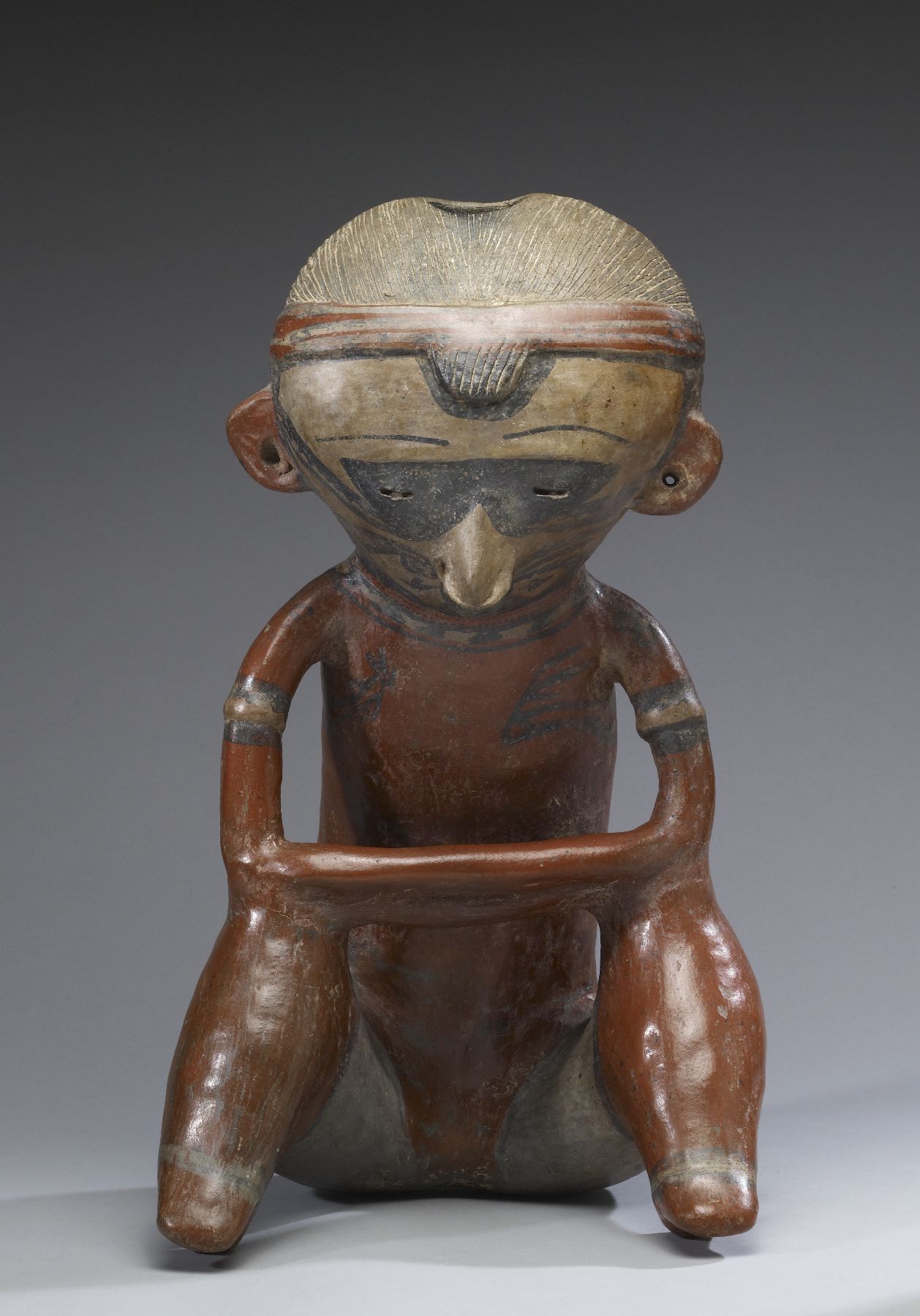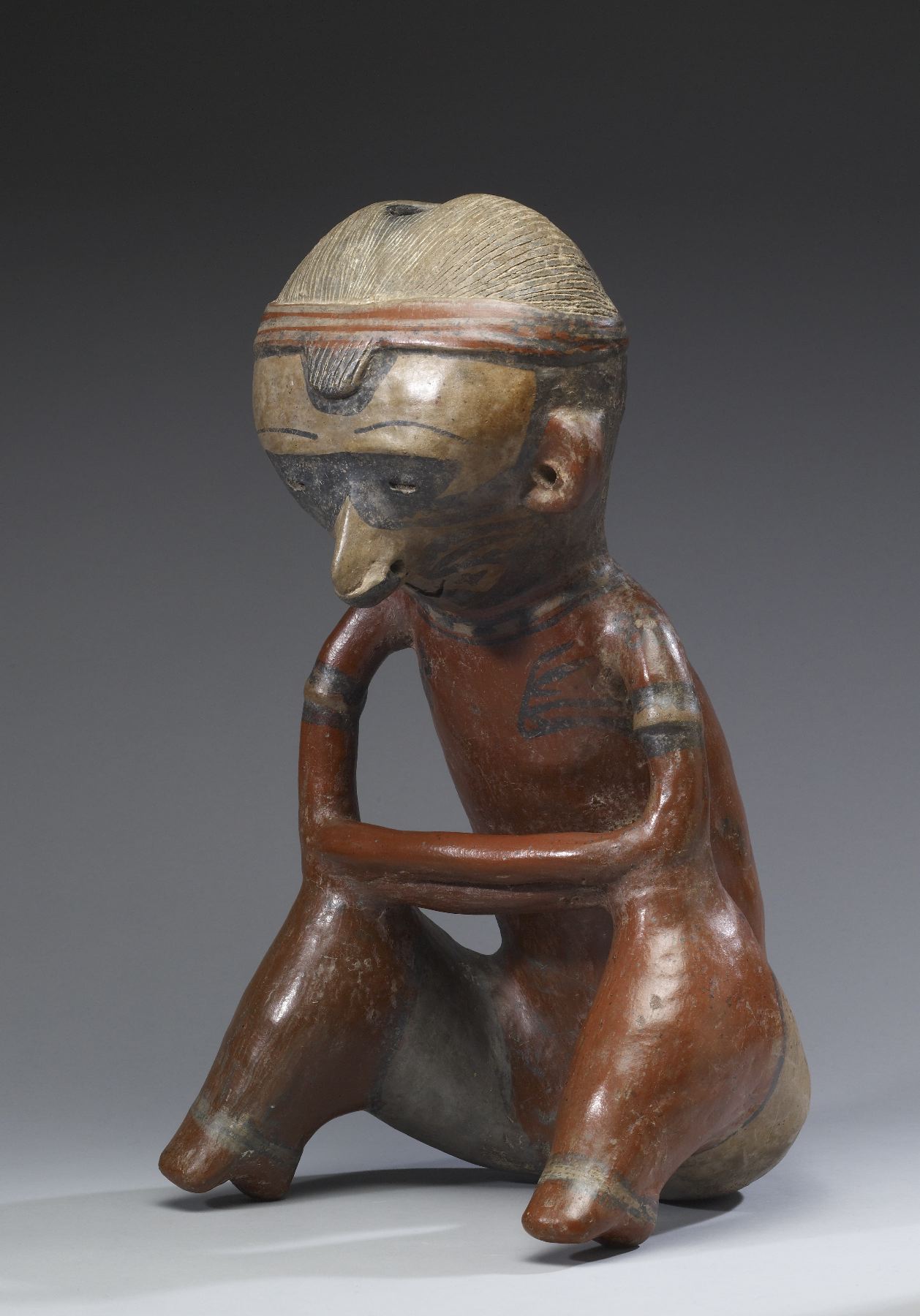Seated Male
(Ancient Americas )
Lagunillas figures often portray men, usually in a seated position with elbows resting on bent knees and forearms crossed on top of each other. The torso leans forward, and the face gazes downward. This figure's loins are wrapped in a relatively wide hip cloth of unadorned fabric. He wears a textile or plant fiber triple-strand band around his head, a forelock of hair falling below the band. His face is extensively painted with black designs, including masklike half circles around his eyes and whisker-like motifs extending outward from the corners of his mouth. Arm and ankle bands, perhaps made of cut shell, adorn his limbs; similar multi-stringed ornaments have been found adorning corporeal remains in many tombs from this region.
Provenance
Provenance (from the French provenir, 'to come from/forth') is the chronology of the ownership, custody, or location of a historical object. Learn more about provenance at the Walters.
Stendahl Galleries, Los Angeles [date and mode of acquisition unknown]; John G. Bourne, 1960s, by purchase; Walters Art Museum, 2009, by gift.
Exhibitions
| 2012-2013 | Exploring Art of the Ancient Americas: The John Bourne Collection Gift. The Walters Art Museum, Baltimore; Frist Center for the Visual Arts, Nashville. |
| 1998-2008 | Art of Ancient America, 1500 B.C.-1400 A.D.. Museum of New Mexico, Santa Fe. |
Geographies
Mexico, Nayarit (Place of Origin)
Measurements
H: 18 3/16 x W: 10 11/16 x D: 13 15/16 in. (46.2 x 27.2 x 35.4 cm)
Credit Line
Gift of John Bourne, 2009
Location in Museum
Not on view
Accession Number
In libraries, galleries, museums, and archives, an accession number is a unique identifier assigned to each object in the collection.
In libraries, galleries, museums, and archives, an accession number is a unique identifier assigned to each object in the collection.
2009.20.61








